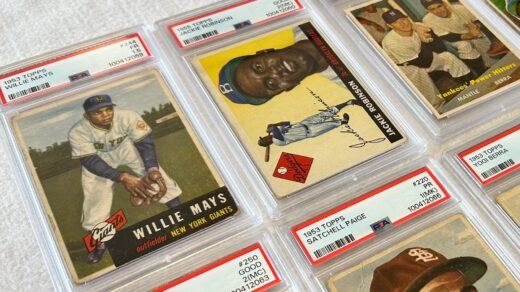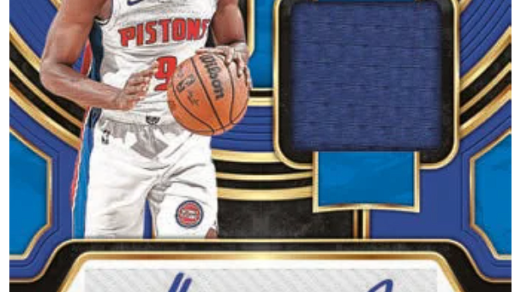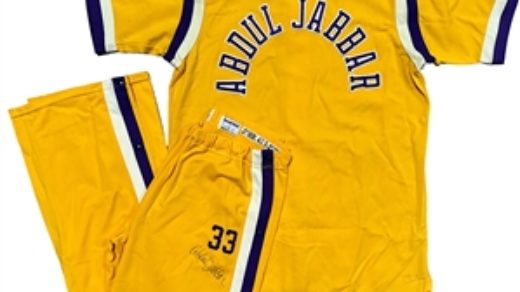Perhaps nowhere is the intersection of art and life more pronounced than in the mundane routines we find ourselves in daily. For Phil Imbriano, a senior designer at Topps, it was neither a celebrated art show nor a grand architectural feat that kindled his creative spark for the 2025 Topps Series 1 baseball cards. No, the genesis of his inspiration grew from something as ordinary as a New York City subway ride—a testament to the proverbial fact that cosmic bursts of creativity can strike in the most unlikely of places.
As he embarked on his daily commute, Imbriano’s attention was captivated by a seemingly banal red-and-silver badge glinting in the corner of the train. Its sleek lines and contours resonated with him in an inexplicable way. Quick as a flash, he captured the image on his phone, and, by the time he arrived at Topps, he was already building the bridge from inspiration to conception with fervent sketches. These sketches formed the basis of what we now recognize as the 2025 Topps Series 1 baseball cards, which officially unveil themselves to the collecting world today.
Imbriano, effervescent with creativity, reflects, “I love drawing inspiration from everyday things. It could be a building, a sign—just something that catches my eye. I take pictures and refer back to them later. You never know when something simple will turn into something big.”
The design that has emerged features two bold lines arching up the left side and across the card’s top, a gentle nod to the nostalgia-inducing 1982 Topps set. Whether a collector in search of echoes of past eras or a newer aficionado seeking modern flare, the design offers a foot in both worlds. This nod to the past was not a deliberate move initially, but rather a serendipitous harmony that unfolded as Imbriano melded inspiration from the woodgrain aesthetics of the 1962 and 1987 sets. Imbriano muses on the unexpected parallel, remarking, “The ’82 connection was a happy accident. But I think it works because it blends vintage style with a modern twist.”
This design was not selected in isolation; it was the result of a demanding in-house contest where Topps designers showcased their visions, each going through rigorous scrutiny. Imbriano’s vision, withstanding competition from over twenty other submissions, emerged triumphant after a painstaking, months-long selection process. In a nod to Topps’ appreciation for past creativity, elements from non-winning designs occasionally resurface in future sets. For example, this set flaunts a diminutive field graphic in the lower right corner—a relic of past innovative submissions.
Landing on the final design wasn’t an instantaneous eureka moment but rather a creative journey wherein Imbriano navigated through approximately ten different versions. “There’s so much that goes into this process,” he says, illuminating the painstaking intricacies few collectors might consider when they eagerly unwrap a new pack.
Yet, pen and paper sketches are but part of the Topps card alchemy. Once digital designs reach their finality, the real magic happens as tangible prototypes are crafted. These prototypes aren’t mere replicas; they are experimental touchstones evaluated for aesthetic appeal and tactile engagement. Clay Luraschi, Topps’ senior vice president of product, underscores the importance of this approach, noting, “When we’re down to the final five designs, we actually print them out and simulate opening a pack. It’s a long, competitive process, and it’s one of the biggest debates we have in the office all year.”
Luraschi further elaborates on the solemnity and significance of this tradition, “Everyone on the team knows how important this is. This is the 74th edition of Topps baseball cards. From the early days when Sy Berger designed them on his kitchen table to today’s high-tech process, we all take that legacy seriously. It’s a big deal—but also a lot of fun.”
Beyond the allure of the base design, the 2025 series offers an array of tantalizing subsets that enrich the card unboxing experience. Some of these subsets—such as Future Stars, All-Topps Team, and Call to the Hall—celebrate contemporary baseball achievements even while weaving the fabric of history and culture with subsets like Signature Tunes, which pairs players with artists of their walk-up songs, and First Pitch, a jubilant recall of celebrities who tossed ceremonial first pitches last season.
In a special nod to Dodgers aficionados, special base-card variations depict gleeful, celebratory instant, including the iconic “Freddie Dance”—Freddie Freeman’s unmistakable hip-swaying ritual post-base.
The allure of the 2025 series becomes even more profound with its 35th-anniversary homage to the effervescent 1990 Topps set, best known for its dazzlingly bold colors. At its core, standing boldly amid this kaleidoscope of variations is Imbriano’s signature base design, an homage to the unyielding spirit of baseball and card collecting culture.
Reflecting on his creative philosophy, Imbriano parallels his card design approach to that of crafting a movie poster, each card a standalone celebration as unique as a mini collector’s keepsake. “I approach designing cards like I would a movie poster,” he states. “Each card should stand out on its own, almost like a mini poster in a collector’s hands.”
This collector’s intuition, which fuels Topps’ design rationale, has found a home in the 2025 series. Luraschi praises the enduring impact of Imbriano’s work: “I think Phil’s design is incredible. Fifty years from now, people should be able to look at a card and instantly recognize the year it’s from. This one absolutely nails that idea.”
Ultimately, the 2025 Topps Series 1 set is much more than just another iteration in a long-standing tradition of baseball cards—it’s proof that even a mundane subway ride can lead to something exceptional, merging the beauty of everyday encounters with treasured collector memories.




